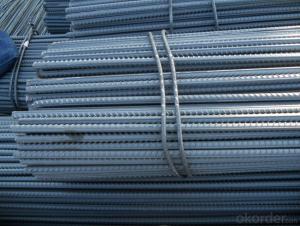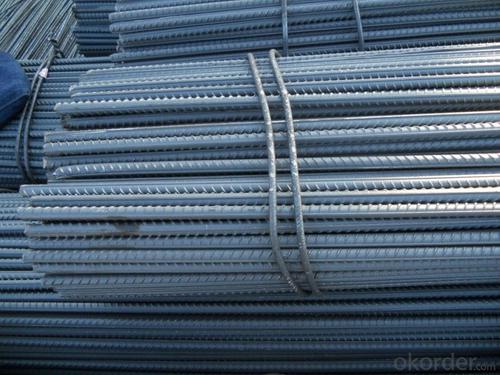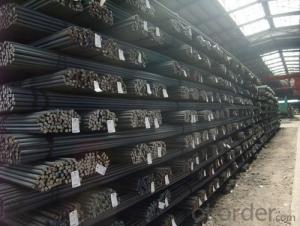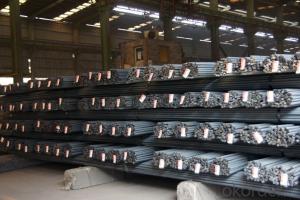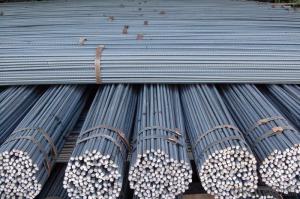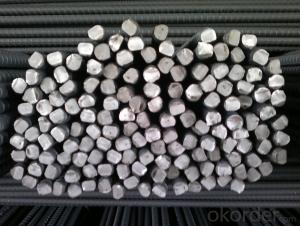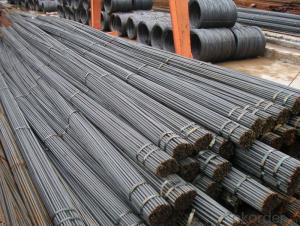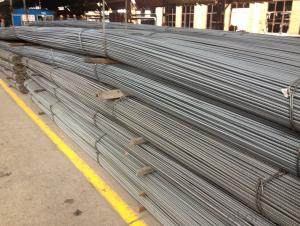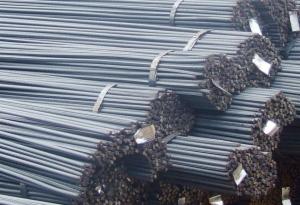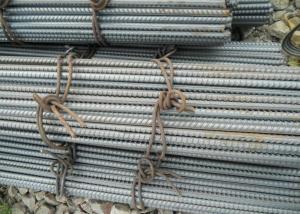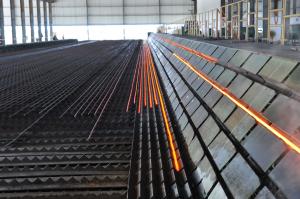Deformed Bars With Material Grade HRB400/500
- Loading Port:
- Tianjin
- Payment Terms:
- TT OR LC
- Min Order Qty:
- 25 m.t
- Supply Capability:
- 20000 m.t/month
OKorder Service Pledge
OKorder Financial Service
You Might Also Like
Specification
OKorder is offering Deformed Steel Bar with high quality at great prices with worldwide shipping. Our supplier is a world-class manufacturer of steel, with our products utilized the world over. OKorder annually supplies products to European, North American and Asian markets. We provide quotations within 24 hours of receiving an inquiry and guarantee competitive prices.
Note:
1. Our products are produced according to national standard (GB), if not, supply according to national standards (GB) or agreement as customer required.
2. Other Grade and Standard Deformed Steel Bar we can supply:
Grade: GR40/GR60, G460B/B500A/B500B/B500C,BST500S
Standard: ASTM, BS, DIN
3. We can not only supply Deformed Steel Bar; if you need anything about building materials, please contact us for further information.
4. Please send us your detail specifications when inquire. We will reply to you as soon as possible. We sincerely hope we can establish a long stable business relationship.
Product Applications:
Deformed Steel Bar with high quality are ideal for structural applications and are widely used in the construction of buildings and bridges, and the manufacturing, petrochemical, and transportation industries.
Product Advantages:
OKorder's Deformed Steel Bar with high quality are durable, strong, and resist corrosion.
Main Product Features:
· Premium quality
· Prompt delivery & seaworthy packing (30 days after receiving deposit)
· Corrosion resistance
· Can be recycled and reused
· Mill test certification
Product Specifications:
Standard | GB | HRB400 | |
Diameter | 10mm-32mm | ||
Length | 6M, 12M | ||
Place of origin | Hebei, China mainland | ||
Advantages | exact size, regular package, chemical and mechanical properties are stable. | ||
Type | Hot rolled deformed steel bar | ||
Chemical Composition:
Grade | Technical data of the original chemical composition (%) | ||||||
C | Mn | Si | S | P | V | ||
HRB400 | ≤0.25 | ≤1.60 | ≤0.80 | ≤0.045 | ≤0.045 | 0.04-0.12 | |
Physical capability | |||||||
Yield Strength (N/cm²) | Tensile Strength (N/cm²) | Elongation (%) | |||||
≥400 | ≥570 | ≥14 | |||||
FAQ:
Q1: Why buy Materials & Equipment from OKorder.com?
A1: All products offered by OKorder.com are carefully selected from China's most reliable manufacturing enterprises. Through its ISO certifications, OKorder.com adheres to the highest standards and a commitment to supply chain safety and customer satisfaction.
Q2: How do you guarantee the quality of our products?
A2: We have established an advanced quality management system which conducts strict quality tests at every step, from raw materials to the final product. At the same time, we provide extensive follow-up service assurances as required.
Q3: What is the normal tolerance of your steel products ?
A3: Normally 1%-3%, but we can also produce the goods according to the customers' requests
Q4:What's your payment terms ?
A4:Mostly,we collect the money by T/T and LC at sight . We also accept time LC at 90/120 days sight.
Image:
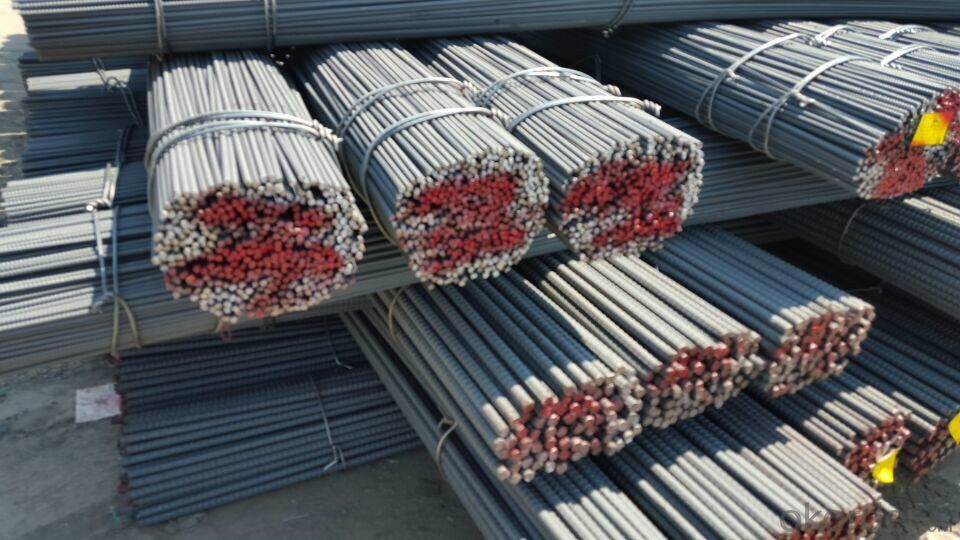
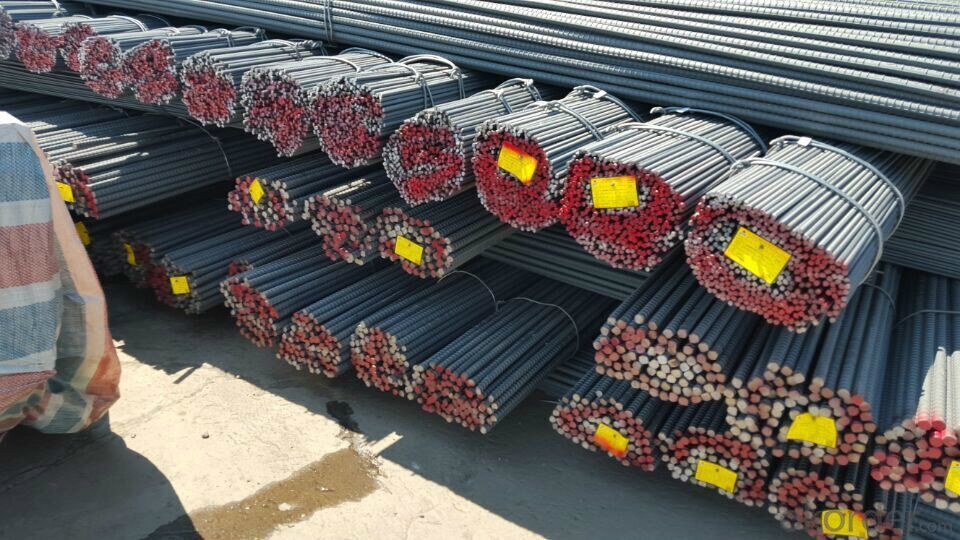
- Q: How are steel rebars handled and stored on construction sites?
- Steel rebars, also known as reinforcing bars, are an integral component in construction projects that require reinforced concrete structures. Handling and storing steel rebars on construction sites require careful attention to ensure their quality and safety. When steel rebars are delivered to the construction site, they should be inspected for any signs of damage or corrosion. Any damaged rebars should be discarded as they can compromise the structural integrity of the project. The rebars should also be checked for proper labeling, including grade, size, and other specifications. To handle steel rebars, workers typically use mechanical lifting equipment such as cranes or forklifts. It is essential to use appropriate lifting tools to prevent any mishandling or accidents that could result in injuries. The rebars should be lifted in a vertical position to avoid any bending or distortion. Once lifted, steel rebars should be stored in a designated area, usually called a rebar yard. The yard should be clean, well-drained, and organized to prevent any potential damage or corrosion. The rebars should be stacked horizontally on leveled ground, ensuring that they are not in direct contact with the soil or water to avoid rusting. To prevent rebars from rolling or falling, they should be securely tied together using binding wires or steel bands. This will also help in maintaining the order and stability of the stored rebars. Additionally, rebars should be stored away from other construction materials, machinery, or equipment to avoid any accidental damage. Proper storage also involves protecting the rebars from exposure to adverse weather conditions. Covering the rebars with waterproof tarpaulins or plastic sheets can prevent moisture absorption and corrosion. Adequate ventilation should be ensured to prevent the accumulation of moisture, which can lead to rusting. Regular inspections of the stored rebars are crucial to identify any signs of damage or deterioration. If any rebars are found to be damaged or rusty, they should be removed and replaced immediately to maintain the structural integrity of the construction project. In conclusion, steel rebars on construction sites are handled and stored with utmost care. Proper handling involves using suitable lifting equipment, while storage requires a clean and organized rebar yard. Regular inspections and maintenance are essential to ensure the rebars' quality and prevent any compromise to the construction project's structural integrity.
- Q: What is the purpose of steel rebars in construction?
- The purpose of steel rebars in construction is to provide reinforcement and strength to concrete structures, preventing cracking and ensuring stability.
- Q: Can steel rebars be used in the construction of dams or reservoirs?
- Indeed, dams or reservoirs can utilize steel rebars in their construction. It is customary to employ steel rebars as reinforcement in concrete structures, such as dams and reservoirs, to bestow them with robustness and steadfastness. These rebars serve to evenly distribute and combat the tensile forces that may arise within these structures due to water pressure and external burdens. Steel rebars possess resistance to corrosion, durability, and commendable tensile strength, rendering them a perfect choice for such purposes. Moreover, their malleability and ease of installation grant flexibility in the design and construction phases.
- Q: What are the advantages of using epoxy-coated stainless steel rebars?
- Epoxy-coated stainless steel rebars offer several advantages compared to traditional steel rebars. Firstly, the epoxy coating provides excellent corrosion resistance, protecting the rebar from moisture and chemicals present in the surrounding environment. This ensures the longevity and durability of the structure, reducing maintenance and repair costs over time. Additionally, stainless steel rebars possess high strength and are resistant to fire, making them suitable for use in harsh and high-temperature conditions. The epoxy coating also enhances the bond between the rebar and the concrete, improving the overall structural integrity. Lastly, the use of stainless steel rebars reduces the risk of staining or rust bleeding, resulting in a more aesthetically pleasing end product.
- Q: How do steel rebars contribute to the strength of concrete?
- Steel rebars contribute to the strength of concrete by providing reinforcement and increasing its tensile strength. The rebars are embedded in the concrete, forming a strong bond between the two materials. This helps to distribute the load evenly and prevent cracks or fractures from forming, making the concrete structure more resistant to bending, shearing, and other external forces.
- Q: What is the impact of steel rebars on the sustainability of a structure?
- Steel rebars have a significant impact on the sustainability of a structure. They enhance the structural integrity and durability of buildings, improving their longevity and reducing the need for frequent repairs or replacements. The use of steel rebars also allows for the construction of taller and more complex structures, optimizing space utilization and reducing the environmental footprint. Additionally, steel rebars can be recycled, promoting resource efficiency and reducing the demand for new steel production, thereby contributing to the overall sustainability of the structure and the construction industry as a whole.
- Q: Can steel rebars be used in the rehabilitation of existing structures?
- Yes, steel rebars can be used in the rehabilitation of existing structures. Steel rebars are commonly used for reinforcing existing structures to improve their strength and durability. By adding steel rebars, the structure can better withstand loads and stresses, thereby enhancing its overall structural integrity. Additionally, steel rebars can also help in preventing or mitigating the effects of deterioration, such as corrosion, which can prolong the lifespan of the rehabilitated structure.
- Q: How much is the minus difference per ton of thread steel?
- H, R, and B are the first letters in English for hot-rolled (Hotrolled), ribbed (Ribbed) and reinforced (Bars) three words. Hot rolled ribbed bar is divided into HRB335 (old No. 20MnSi), HRB400 (20MnSiV, 20MnSiNb, veteran, 20Mnti), HRB500 three brands.
- Q: What is the average weight of a steel rebar?
- The average weight of a steel rebar can vary depending on its size and length. Steel rebars are typically sold in lengths of 20 feet and come in various diameters ranging from 3/8 inch to 1 1/4 inch. To calculate the average weight, we need to consider the density of steel, which is approximately 0.2836 pounds per cubic inch. The weight of a steel rebar can be determined by multiplying its volume (pi times the square of the diameter divided by 4, multiplied by the length) by the density of steel. For example, let's take a 1/2 inch diameter rebar with a length of 20 feet. The calculation would be as follows: 1. Convert the diameter to inches: 1/2 inch = 0.5 inches 2. Calculate the volume: (pi * 0.5^2) / 4 = 0.19635 cubic inches 3. Convert the length to inches: 20 feet = 240 inches 4. Multiply the volume by the length: 0.19635 cubic inches * 240 inches = 47.04 cubic inches 5. Multiply the volume by the density of steel: 47.04 cubic inches * 0.2836 pounds per cubic inch = 13.34 pounds Therefore, the average weight of a 1/2 inch diameter steel rebar with a length of 20 feet is approximately 13.34 pounds.
- Q: Can steel rebars rust or corrode over time?
- Yes, steel rebars can rust or corrode over time due to exposure to moisture, oxygen, and other environmental factors.
Send your message to us
Deformed Bars With Material Grade HRB400/500
- Loading Port:
- Tianjin
- Payment Terms:
- TT OR LC
- Min Order Qty:
- 25 m.t
- Supply Capability:
- 20000 m.t/month
OKorder Service Pledge
OKorder Financial Service
Similar products
Hot products
Hot Searches
Related keywords
